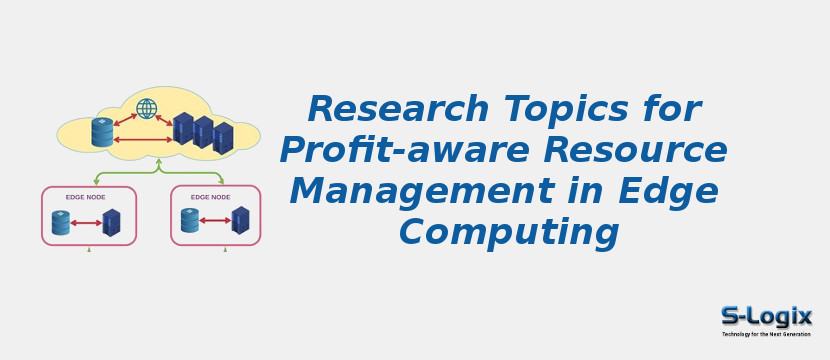Profit-Aware Resource Management (PARM) is a strategy for managing resources in edge computing systems to maximize profit. The basic idea behind PARM is to dynamically allocate computing resources to different applications based on the expected profit from each application.
In a PARM system, each application is assigned a profit value representing the revenue generated from executing that application. The resource manager uses this information to allocate resources to maximize the system-s total profit. PARM is particularly important in edge computing systems as the resources are limited, and applications must compete for limited resources.
By using PARM, the resource manager can ensure that resources are used efficiently and effectively, maximizing the profit for the edge computing system as a whole. An edge infrastructure provider (EIP) plays a phenomenal role in purchasing, deploying, and managing the edge infrastructure.
• The difference between the revenue for presenting an application and the cost incurred to run the infrastructure.
• An individual edge infrastructure provider(EIP) can maximize the management of its resources by multiplexing the same physical infrastructure across various tenants. Edge infrastructure provider(EIP) can either shut down infrastructure to conserve energy or allocate as many resources as needed by the hosted application to avoid paying Quality of services(Qos) penalties, thereby reducing costs and boosting a net profit.
• EIP allows multiple virtual machines(VM) to each edge node and uses as few edge nodes as possible to attain profit in resource management. The EIP considers the time-varying workload of the edge infrastructure provider determining the leading way to allocate the required virtual machines(VM). Each application instance is fixed in a set of identical virtual machines, and an individual runs in a single instance hosted by edge nodes. EIP provides an online profit maximization algorithm to increase profit on resource management in accordance with edge infrastructure provider objective.
• Quality of Service (QoS) Requirements: The Quality of Service (QoS) requirements of each application must also be considered when determining PARM. For example, some applications may require low latency or high bandwidth, while others may be less demanding.
• Application Profitability: This is the most important factor in PARM, as it represents the expected revenue generated by each application. The resource manager uses this information to prioritize and allocate resources based on expected profit.
• Deadline Constraints: Applications with tight deadline constraints, such as real-time applications, may require a higher priority for resource allocation. The resource manager must consider these constraints when allocating resources.
• Dynamic Environment: Edge computing systems are often deployed in dynamic environments where resource demand can change rapidly and unpredictably. It makes it difficult for the resource manager to accurately predict the resource needs of each application, leading to a complex and challenging resource allocation problem.
• Privacy and Security: Protecting the privacy and security of sensitive data is another critical issue in PARM. It requires the implementation of secure and privacy-preserving algorithms and the use of secure and trusted communication channels.
• Uncertainty: The PARM problem is inherently uncertain, as the future resource demands and profitability of applications are difficult to predict. It isn-t easy to make accurate and reliable resource allocation decisions.
• Advanced Resource Allocation Algorithms: Developing advanced and efficient resource allocation algorithms that can balance multiple objectives, such as maximizing profit, energy efficiency, and Quality of Service (QoS), is another important area for future research.
• Handling Dynamic Environments: Another area for future research is handling edge computing environments unpredictable and dynamic nature. It involves developing algorithms that can adapt to changing resource demands in real time, ensuring that the right resources are allocated to the right applications at the right time.
• Privacy and Security: Ensuring the privacy and security of sensitive data is a crucial area for future research. This can involve developing algorithms that can secure data at rest and in transit and implement privacy-preserving algorithms that protect sensitive data from unauthorized access or misuse.
• Quality-Aware Profit-Driven Resource Allocation in Edge Computing Systems
• A Multi-Objective Optimization Approach for Profit-Aware Resource Allocation in Edge Computing Systems
• Profit-Aware Resource Allocation in Edge Computing Systems with User Privacy Protection
